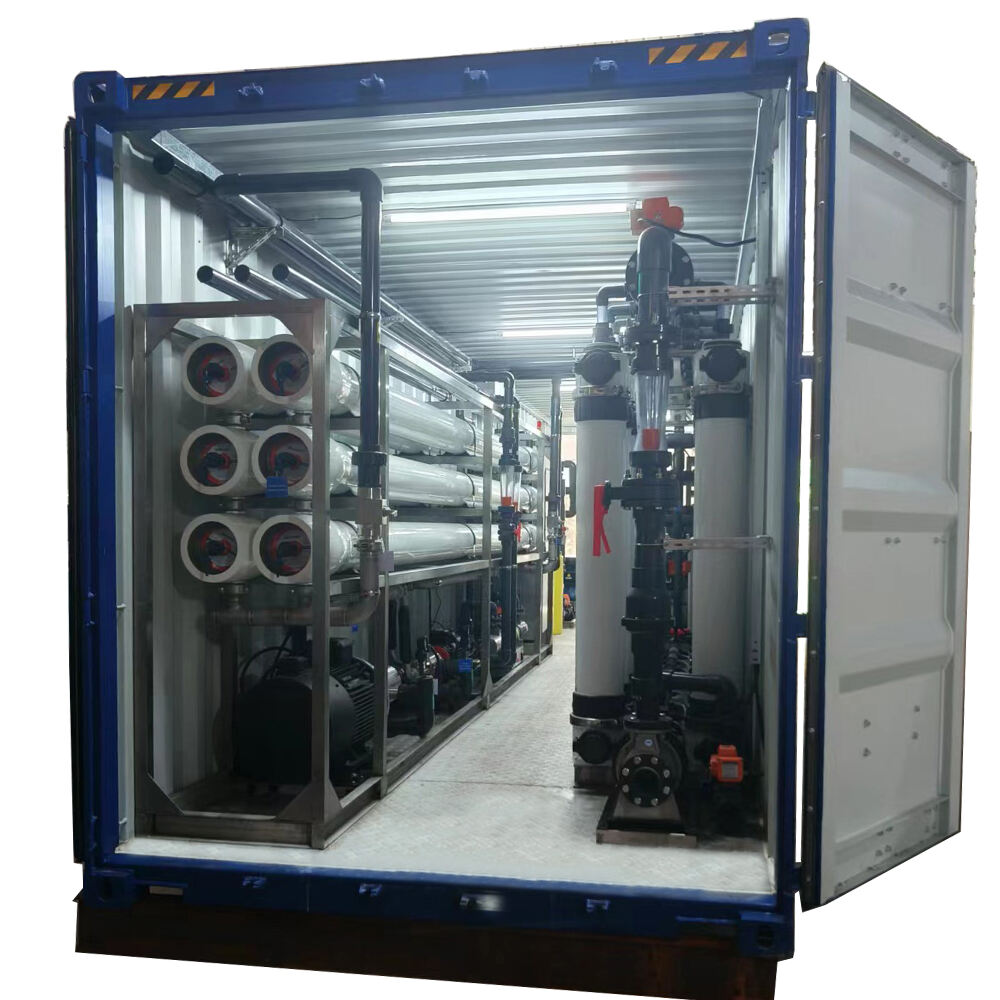Iṣoro ti ko si igbẹkẹle si omi tutu wa ni ile-iṣẹ, ati prosesu desalination ti omi ọna yoo jẹ iru teknoloji kan ti o wọpọ lati gba itọsọna ti o tobi. Nípasẹ company ti o ga ti o nṣiṣẹ pẹlu idiwọn membrane, Guangzhou VOCEE Membrane Technology le pese awọn iṣẹ desalination omi ọna ti o ga ti a le lo lati mu omi ọna silẹ si omi miiran tabi omi ti a le lo ní industriya. Awọn akọsilẹ yii sọrọ nipa desalination omi ọna ki o sọ pe kini o ṣe n ṣiṣẹ.
Seawater Desalination jẹ kini?
Ìtọ́jú ọmimì ní àwòsùn jẹ́ ìṣẹ̀lẹ̀ tí ó se àtúnṣe àwọn òbò àti àwọn ohun elo mẹ́tẹ́rẹ̀ nínú ọmimì ní àwòsùn láti rí ámútọ. Ó jẹ́ ọ̀rụ̀ ayàgbero ní àwọn ibò ti ọmimì bá wọ́, èyí tó ń pàpọ̀ sí ìdásílẹ̀ ọmimì fún àwọn ilé àti fún ìṣelọpọ̀. Àwọn ìmọ̀ ẹ̀rọ VOCEE yoo fún un ní ọmimì tí ó tóbi, tí kò bá gbàgbọ́, àti tí ó dára gẹ́gẹ́ bí ààyè kan lórílẹ̀-èdè, nítorí ìgbàdí pipẹ̀ nínú ìmọ̀ ẹ̀rọ membrane.
Àwọn Ẹ̀ka Pataki Tó Wà Nínú Ìmọ̀ Ẹ̀rọ Ìtọ́jú Ọmimì
Ìmọ̀ ẹ̀rọ ìtọ́jú ọmimì ní àwòsùn kan tàbí ọ̀kan lè jẹ́ ààdọta nípa àwọn ìgbà mẹ́tẹ̀ta. Àwọn ìmọ̀ ẹ̀rọ àkọsílẹ̀ yóò mú ọmimì ní àwòsùn sii àti a yóò ṣe ìdásílẹ̀ àwọn ohun tí kò tó, algae, àti àwọn ohun mẹ́ta ti kò tó. Bí ọ bá ti parí, a yóò tú àwọn ìfọwọsi alágbára bíi ultrafiltration (UF) tàbí àwọn ìmọ̀ ẹ̀rọ mìíràn láti mú kí ọmimì yóò dára fún ìṣẹ̀lẹ̀ pataki ju: reverse osmosis (RO). Àwọn àdánilòlú VOCEE fún un ní gbogbo àwọn ohun wọ̀nyí láti dáabò ìṣẹ̀lẹ̀ títun.
Iru Reverse Osmosis
Ìtọ́jú ìdàmára osmosis (RO) jẹ irinṣẹ tó ní ọ̀pọ̀lọpọ̀ láti idiwọn omi. Àkójọpọ̀rọ omi ọsun wá yìí kò sílẹ̀ lórí àwọn pampa ipilẹkun tó dá omi wá fún àwọn ìdàmára RO tí ó tọ́ka ara wọn nítorí ó máa ṣe íwọle mímọ olomi, bakteria àti àwọn ènìyàn èyàn mìíràn. Àwọn ìdàmára RO tí ó rọgbàdún VOCEE ti a kó tó ní àwọn ìdíje tó dáa láti íbajẹ omi àti ìgbàgbọ́; nítorí ó yàtọ̀ nínú àwọn ìpò omi ọsun tó wústé.
Àkójọpọ̀rọ àti Ìdásílẹ̀
Láìgbá àkójọpọ̀rọ omi wá yìí ti parí, omi yìí yàtọ̀ láìgbá àkójọpọ̀rọ tó mú kí o tó ọ̀nà kemikali rẹ̀ àti kí o dàgbàdára àti kí o dáara fun igi. O le jẹ ìdásílẹ̀ mímọ, àìbára àti ìtọ́ntà pH. Àwọn irinṣẹ VOCEE ti a kó tó ní àwọn àdánibíyà tó pọ̀, láìgbá àkójọpọ̀rọ títí dé ìdásílẹ̀ omi pẹ̀lú kí o tọ̀ ọ̀nà tó wúlò láti mú kí omi wá yìí dáa.
Àwọn Ìmúṣẹlẹ̀ Tó Dárípọ̀ Láàrin Àwọn Irinṣẹ Àkójọpọ̀rọ Omì Módèrùn
VOCEE jẹ iru ti o ni iṣelọpọ giga, ti o lo agbara pupo, kii ṣe idagbasoke ati ti a ṣẹda lati duro gan-an. Wọn le ḷagosile si awọn ipo mẹtafẹ iwaju odo ti o yatọ pẹlu iṣẹlẹ odo titun tuntun. Iru itura yii ko ni igbaniyanju nikan lori isalẹ odo, ṣugbọn o tun pese inu idagbasoke ayelujara, nitori pe o funni ni ibi ti o tobi julọ fun odo.
Iwadi Nila VOCEE ti Guangzhou jẹ ibilẹ ti o wà láti ṣe amulo ati foonu awọn iru itura ti a ti ṣẹda fun ẹrọ itura odo mẹtafẹ ti a ti ṣẹda lati dana si awọn ohun elo yatọ bii ifoonu ara ilu ati awọn ipo alabapin. Nipa mu akoko tuntun ati oye wa pada, VOCEE jẹ iru kan ninu awọn ti o ma n gba ibaṣepọ lati mu imototo odo ti awọn arakayé pada nipa ifihan itura tuntun ni ọna ti itura nila.

